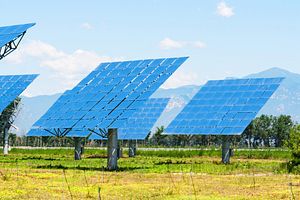At its meeting Paris in December 2015, the United Nations climate change conference plans to finalize a comprehensive global greenhouse gas reduction protocol for the period beyond 2020. As the world’s largest emitter, China’s reduction commitments will significantly determine the deal’s overall impact. Whether a positive outcome is in the interests of the Chinese leadership is therefore one of the foremost questions in the remaining 16 months of negotiations. The good news for the climate is that more ambitious emission reduction targets are much more in line with China’s macroeconomic reform plans than they were in Copenhagen in 2009.
Recent concerns about the long-term availability of cheap domestic coal resources, including rumors that China might impose an absolute cap on coal consumption, and plans to clean up China’s air suggest that the leadership might be willing to commit to significant emission reductions in Paris. An ambitious deal might also stimulate more demand for innovations in clean technologies, in which China is emerging as a global leader. But because of the UN’s decision-making process, in which all its members have to agree on a new deal, Xi Jinping is in the powerful position of being able to commit to only as much emission reductions as fit his domestic policy agenda. The question is thus a larger one: Are the structural economic changes required for ambitious emission reduction commitments compatible with Xi Jinping’s wider economic reform agenda?
In 2009, the last time an agreement was within reach, China was still riding on the decades-long wave of investment-driven growth. It was also in the middle of a $586 billion stimulus package in response to the global financial crisis. Much of the stimulus spending went into emission-intensive activities – notably the construction of housing and infrastructure – to spur demand for products and workers from the export industries endangered by a global slump in demand. The Chinese leadership was preoccupied with maintaining growth at levels high enough to absorb young people entering the workforce and to avoid mass layoffs. Any further economic burdens in the form of emission reduction commitments would have gone against their fundamental economic interests. From a macroeconomic perspective, the conference in Copenhagen came at the worst-possible moment.
Now, as the summit in Paris in 2015 is approaching, the China’s economic context has changed fundamentally. The workforce fell for the first time in 2011, reducing pressure to increase employment. The export share of GDP fell from 38 percent in 2007 to 26 percent in 2012, making China more independent of sluggish global demand. And because of the stimulus package and similar measures targeted at credit expansion, the investment share of GDP rose from an already-high 42 percent in 2007 to 49 percent in 2012, worrying economists that local government debt and bad loans on banks’ balance sheets had grown fast enough to become an economic burden and a concern for financial stability.
The new macroeconomic strategy is rebalancing, i.e., redirecting economic growth from investment in infrastructure, capital-intensive industries, and export toward domestic consumption. The leadership’s rebalancing strategy, unveiled at the Third Plenum last year, includes a shift from industry toward the service sector, more efficient credit allocation – which has so far favored state-owned industries – and market-based reforms to reduce inefficiencies in the pricing of natural resources, commodities, and other productive inputs. These three focal reforms all point toward more “quality and efficiency” in the economy, as Li Keqiang put it, and a gradual shift away from emission-intensive construction, investment, and industrial production. The summit in Paris thus comes at a time when China’s leaders will be much more inclined to make commitments toward slower emission growth, or even an absolute cap.
But besides the economic realities that might make it easier to commit to more stringent climate policy targets, a global agreement could become politically useful for Xi Jinping. If indeed adopted, an ambitious deal on climate change would require a fundamental reallocation of resources in China’s economy, much as the accession to the World Trade Organization in 2001 did in the 15-year long process before entry.
Like their predecessors, who were opening up the economy against strong resistance throughout the agricultural and state-owned industrial sectors, China’s current leadership faces strong political opposition to his reforms – especially from those parts of the economy that benefited handily from decades of emission-intensive investment and construction. Just as the requirements set by the WTO helped overcome resistance to the reduction of import tariffs and enhanced competition, commitments under an international agreement might help overcome domestic resistance to Xi Jinping’s domestic rebalancing agenda.
The macroeconomic and political contexts create a situation that makes ambitious Chinese commitments in Paris much more likely than they were just five years ago in Copenhagen in 2009. This presents a unique window of opportunity that the world must try to seize over the coming months.
Joern Huenteler is a research fellow in the Energy Technology Innovation Policy (ETIP) research group at the Harvard Kennedy School and a Ph.D. candidate at the Department of Management, Technology, and Economics at ETH Zurich (Switzerland). He focuses on energy and climate policy.
































